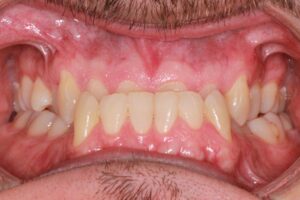Orthodontic problems can affect anyone – in fact, our teeth are almost never naturally perfect. Malocclusion, or a “bad bite”, can cause problems with chewing, oral hygiene, speaking and aesthetics. A bad bite can be genetic, or can be caused by thumb sucking, dental disease, poor dental hygiene, accidents, birth defects or other medical conditions.
Being educated about the orthodontic problem you or your child may have is the first step to correcting it. Orthodontic treatment performed by Dr. Hillarie Ryann Hudson or Dr. J. Michael Hudson can improve both the functionality of your bite and the appearance of your smile.
Below are some examples of the most common orthodontic problems.
Overjet or Upper Front Teeth Protrusion
The appearance and function of your teeth are impacted by this type of bite. It is characterized by the upper teeth extending too far forward or the lower teeth not extending far enough forward.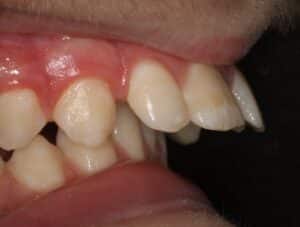
Overbite
The upper front teeth overlap the lower front teeth, sometimes causing the lower front teeth to bite into the roof of the mouth.
Crossbite
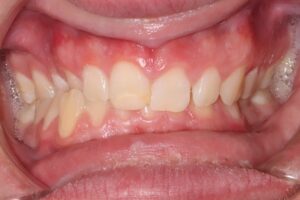
Openbite
Proper chewing is impacted by this type of bite, in which the upper and lower front teeth do not overlap. Openbite is caused by a number of unwanted habits, such as tongue thrusting or thumb sucking.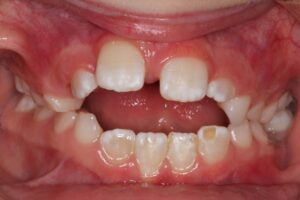
Crowding
Crowding occurs when teeth have insufficient room to erupt into the mouth. Crowding can often be corrected by expansion, making space between the teeth or tooth removal.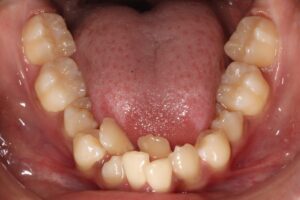
Spacing
Spacing problems may be caused by missing teeth or from an aesthetic issue in which the teeth do not have “normal” size or shapes.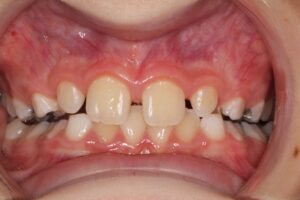
Underbite
The lower teeth are in front of the upper teeth. This is the opposite of a normal/correct bite. This type of bite usually gets worse with more growth.